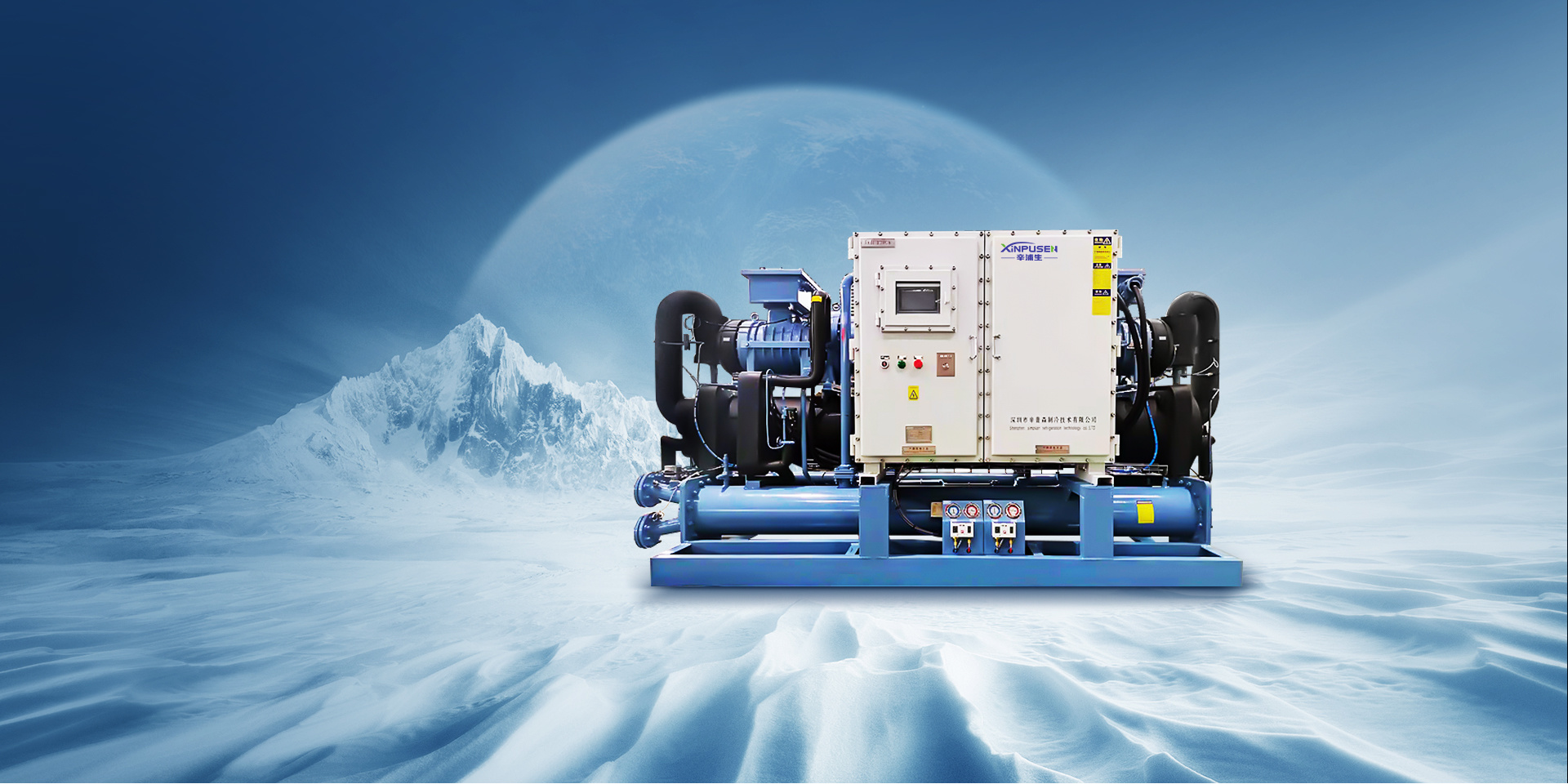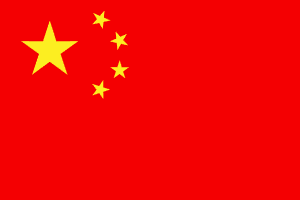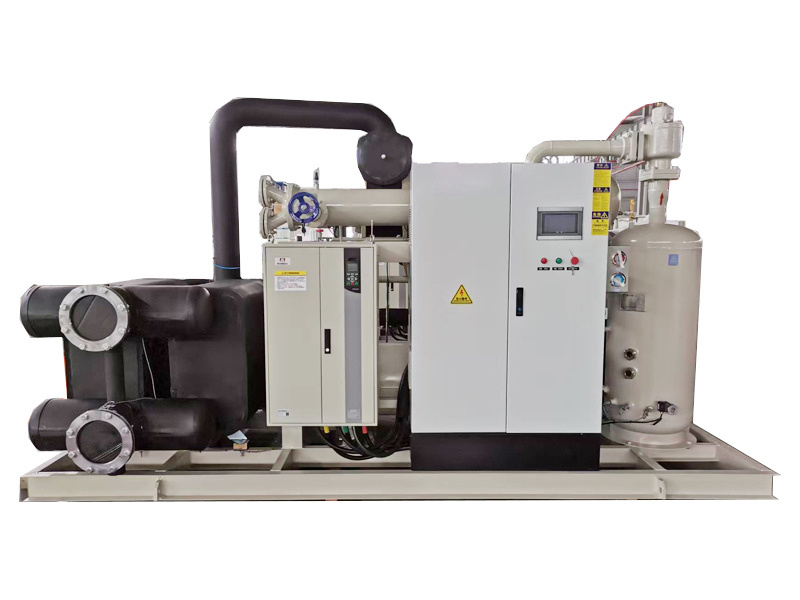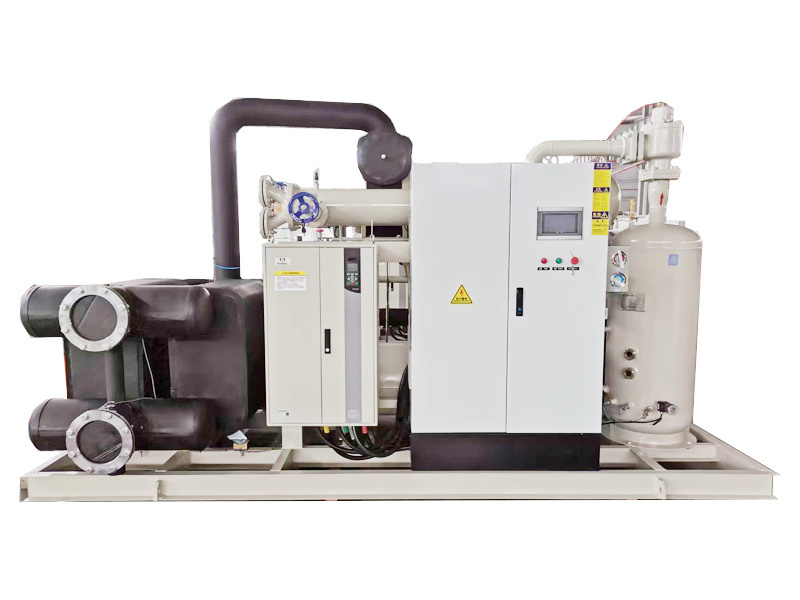Solutions for insufficient water flow fault codes in water dispensers - check here!
2025-01-23 09:31
Simpson Group, a large-scale refrigeration equipment manufacturing plant originating from advanced German refrigeration technology, specializes in producing: Chillers Units, industrial chillers, screw chillers, full-liquid chillers, low-temperature ice water machines, air-cooled and water-cooled chiller units, explosion-proof chillers, customized chillers, semi-hermetic condensing units, screw condensing units, and other refrigeration equipment, and has won CCTV Brand Plan China's Preferred Brand. Welcome to inquire by phone!
Chillers Occurrence of the "insufficient water flow" fault code. The equipment is in a shutdown state. This is usually because of insufficient water flow, triggering the chiller's fault interlock device and closing the water flow switch, causing the equipment to stop.
Below, I will explain the hazards of insufficient water flow.
Obviously, insufficient cooling water flow in the chiller will lead to reduced refrigeration efficiency, affecting the cooling of equipment that needs cooling, causing an imbalance in the temperature control of the production process, and even causing serious production problems and accidents.
Generally, for this situation, the chiller unit's R&D design includes a fault interlock device, such as insufficient water flow, high-pressure alarm, water pump current protection, and other protective functions to prevent irreversible damage if the equipment continues to operate after a fault occurs.
The following are the causes and solutions for the insufficient water flow fault code. Manufacturers using chillers may refer to this to find the cause of the fault, making it easier to quickly solve the problem and resume production.
First, are the cooling water pipes connected incorrectly?
Cooling water pipes have inlet and outlet pipes, one flowing cold water and one flowing hot water, and their specifications are different. When the inlet and outlet pipes are reversed, different inlet pipe diameters will produce different water flow rates. Therefore, reversing the inlet and outlet cooling pipes can also cause the insufficient water flow fault code to appear.
Solution: After the equipment is shut down, reinstall the inlet and outlet pipes.
Second, abnormal water pump or pipeline, insufficient water flow
The water pump provides power in the chiller's water circulation. If it does not operate or malfunctions, the cooling water cannot be delivered to the equipment's cooling pipes, causing insufficient water flow. In addition, blockage of the cooling water pipe, causing obstruction of water circulation, will also cause insufficient water flow.
Possible causes:
Reverse water pump; water pump circuit breaker; impeller, water pipe blockage or damage;
Solution: Correct the direction of the water pump motor, clean the water pump or impeller, clean the water pipes, clean the filter, check the water pump seal, and check the water intake.
Third, insufficient water in the tank or system
When the water flow in the water tank or system pipeline is less, insufficient water flow will also occur, usually due to system water leakage.
Solution: Check the various water pipes, water tank, water pump, filter device, etc., for leaks, and find and repair them.
Fourth, the chiller model does not match the production equipment
This is a problem that occurs during the selection phase. We know that chiller selection needs to consider parameters such as cooling capacity, water flow rate, temperature difference, and water pressure. If the selection does not match the equipment, it will cause many problems during later operation.
For example, if the chiller is equipped with a small lift water pump, the water flow rate will not keep up.
For example, if the cold water pipe is too narrow and too long, it will cause water flow obstruction and insufficient water flow.
Chiller selection has specific refrigeration quotation schemes and installation drawings. Based on the customer's equipment situation, the water flow rate and water pressure are repeatedly calculated, combined with material conditions, environment, etc., to determine the final cooling capacity until the chiller model that best meets the customer's needs is matched.
If the chiller shows an insufficient water flow fault code, don't panic; find the cause step by step to solve the problem. If you can't find the cause, don't easily handle it; contact the manufacturer for solutions to solve the problem as quickly as possible.
Summarized as follows, the reasons for the insufficient water flow fault code in the chiller are:
Inlet and outlet pipes reversed;
Abnormal water pump or pipeline;
Insufficient water in the tank or system;
Incompatible chiller selection.
Checking against this will help to quickly solve the fault. If the problem cannot be solved, please consult the chiller manufacturer's after-sales service.
Previous: 8 Common Causes and Solutions for Water Leaks in Chillers - A Must-Read!
More Information
2025-10-27
Unlocking the Benefits of Ultra-Low Temperature Cascade Chillers in Industry
2025-10-20
china double-stage low temperature chiller
2025-10-20
Understanding Double-Stage Low Temperature Chillers: Efficiency and Applications
2025-10-13
Understanding the Benefits of a Double-Stage Low Temperature Chiller: A Comprehensive Guide
2025-10-27
Unlocking the Benefits of Ultra-Low Temperature Cascade Chillers in Industry









 CN
CN EN
EN



